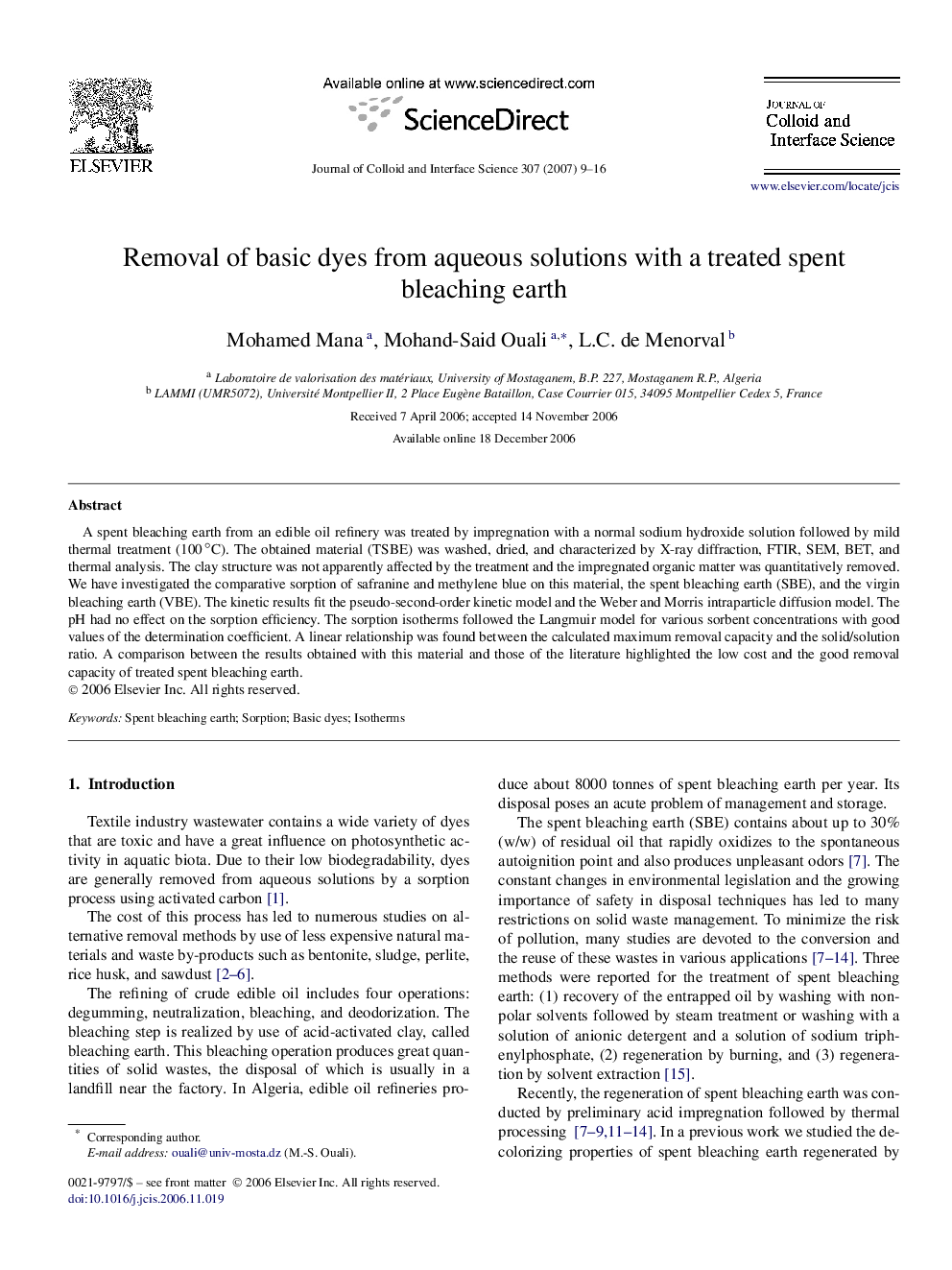| Article ID | Journal | Published Year | Pages | File Type |
|---|---|---|---|---|
| 612507 | Journal of Colloid and Interface Science | 2007 | 8 Pages |
A spent bleaching earth from an edible oil refinery was treated by impregnation with a normal sodium hydroxide solution followed by mild thermal treatment (100 °C). The obtained material (TSBE) was washed, dried, and characterized by X-ray diffraction, FTIR, SEM, BET, and thermal analysis. The clay structure was not apparently affected by the treatment and the impregnated organic matter was quantitatively removed. We have investigated the comparative sorption of safranine and methylene blue on this material, the spent bleaching earth (SBE), and the virgin bleaching earth (VBE). The kinetic results fit the pseudo-second-order kinetic model and the Weber and Morris intraparticle diffusion model. The pH had no effect on the sorption efficiency. The sorption isotherms followed the Langmuir model for various sorbent concentrations with good values of the determination coefficient. A linear relationship was found between the calculated maximum removal capacity and the solid/solution ratio. A comparison between the results obtained with this material and those of the literature highlighted the low cost and the good removal capacity of treated spent bleaching earth.
Graphical abstractSorption of methylene blue (▴) and safranine (■) on treated spent bleaching earth. The Langmuir maximal sorption capacities increase with the solid/solution ratio.Figure optionsDownload full-size imageDownload as PowerPoint slide
